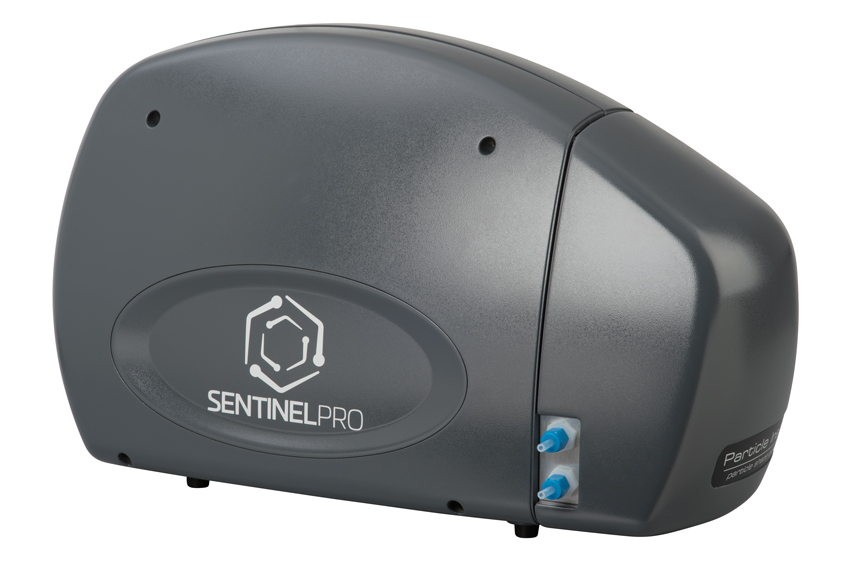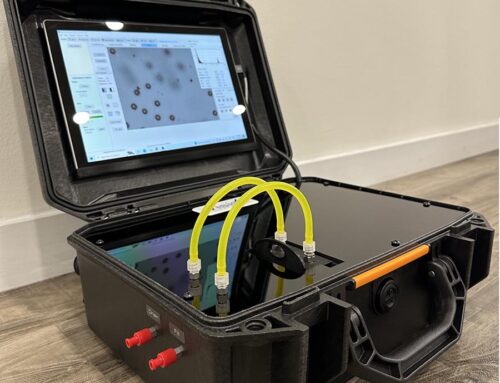Particle analysis is an important field with broad applications in numerous industries. The demand for reliable and accurate particle analysis techniques has led to the development of various automated tools for particle size analysis. These tools report the particle size in terms of equivalent spherical diameter, a necessary representation for irregularly shaped particles. However, the laser diffraction particle size analyzer, a widely used method, presents significant areas for improvement when particles deviate from spherical to irregular-shaped morphologies.
This article aims to highlight the importance of particle shape analysis in particle sizing evaluations, specifically dynamic imaging analysis, which complements particle size analysis. It discusses the role of particle shape in determining and controlling powder flow and performance characteristics.
How Particle Shape Impacts Specific Applications
Particle size is one of the most significant factors affecting the flow behavior of powders. Most operators use robust particle-sizing analytical tools to access and control particle size to desired levels to ensure uninhibited flow properties. However, particle shape is also a key factor in determining and controlling powder flow and performance. Particles of similar size that differ in shape can have very different flow behavior.
The orientation and magnitude of interparticle forces between particles are controlled by shape. Irregularly shaped particles can cause substantial mechanical interlocking and resistance to flow, compromising the reaction kinetics in fluidized bed reactors used for catalytic chemical reactions. Catalyst deactivation rates also increase with irregular or complex-shaped particles, showing increased carbon formation rates.
In inhalation drug therapies, careful consideration of shape is recommended to complement particle size data. The shape has a direct impact on aerosolization, deposition, and flowability. Pollen-shaped particles exhibit improved flowability, greater emitted dose, and improved higher fine particle fractions when compared to other shapes of the same or similar PSD.
In metal powder characterization for additive manufacturing, shape has a definitive influence on powder spreadability. The more spherical the particle, the more positive contribution towards powder flowability and higher particle packing densities within the powder bed. It has also been observed that shape influences the apparent density of the powder feedstock, which can directly affect the final density of the manufactured part.
In pharmaceuticals, the control of shape and crystal form is critical in downstream processing operations such as filtration, drying, and milling. Particle shape will also determine the physical and chemical properties of the active pharmaceutical ingredient (API), such as dissolution rate and solubility. Shape will also influence stability and complexities associated with solid–liquid separations when irregular shapes, including needles, platelets, and dendrite formations, are present.
Case Study – Lactose
To illustrate the influence of shape in pharmaceutical excipients, we analyzed three commercial samples of lactose (FlowLac 100, SpheroLac 100 and Inhalac 230).
Of these lactose samples, the FlowLac 100 and SpheroLac 100 have very similar Particle Size Distribution (PSD), but exhibit a difference in actual shape, whereas the Inhalac 230 and SpheroLac 100 have similar shapes but differ in PSD.
In this case, it can be observed that the Basic Flowability Energy difference is most influenced by the difference in shape morphology of the samples tested as compared to the influence of Particle Size Distribution.

The Particle Insight Sentinel PRO Shape Module for Complementing Particle Size Analysis
Integrating dynamic image analysis into a laser diffraction particle sizing workflow can enhance the accuracy of particle size analysis by including particle shape analysis. The Particle Insight Sentinel PRO Shape Module, a dynamic image analyzer from Vision Analytical, is a device that can integrate directly into the workflow and fluid path.
The Pi Sentinel PROTM Shape Module takes a sample aliquot automatically, straight from the laser light scattering instrument’s reservoir. There is no need to change or re-validate the current process, instead, the system easily integrates within the fluid path of the established size-only instrument.
While the sample is being examined, the Particle Insight Sentinel PRO Shape Module accesses the sample reservoir of the sizing instrument and withdraws a small amount, not exceeding 30 ml, for real-time shape analysis. The module returns the sample to the original instrument without compromising the sample or the accuracy of the obtained particle size measurements. Incorporating dynamic image analysis into your sizing workflow is a game-changing solution suited to an array of applications.
Dynamic Imaging uses high speed, high resolution optics to capture each individual particle as it is continuously streamed past the detection zone of known and controlled volume. This type of system permits random orientation so that each individual particle’s physical shape and size can be measured and represented as a gray scale image and as a binary fingerprint that is used for data deconvolution. By having a continuous flow, resulting in random orientation, dynamic imaging is not compromised with spatial orientation limitations as has been observed with Laser Diffraction (LD). It is also possible to determine particle concentration due to the high-speed particle capture rate and the known volume in the detection area.


This technique can also report number-based valuations for the population as well as volume-based results normally associated with Laser Diffraction. The advantage of a numbers based evaluation permits the user to look at the entire population to uncover information about fines, fractured particles from milling, etc., that because of their lower volume weighted number may not be detected or represented in the LD provided volume based data. This additional information provided by dynamic imaging can provide an increased and needed intelligence regarding morphology in a particle sizing workflow
References:
1 Cho, Jaehun & Sohn, Hong Yong. (2016). Effects of particle shape and size distribution on the overall fluid-solid reaction rates of particle assemblages. The Canadian Journal of Chemical Engineering. 94. 10.1002/cjce.22533.
2 Karthik G. M. and Vivek V. Buwa* Effect of Particle Shape on Catalyst Deactivation Using Particle Resolved CFD Simulations, ISCRE25, May2018
3 Meer Saiful Hassan, Raymond Wai Man Lau. Effect of Particle Shape on Dry Particle Inhalation: Study of Flowability, Aerosolization, and Deposition Properties AAPS PharmSciTech. 2009 Dec; 10(4): 1252. Published online 2009 Oct 29. doi: 10.1208/s12249-009-9313-
4 Hlosta, Jakub & Žurovec, David & Jezerská, Lucie & Zegzulka, Jiří & Necas, Jan. (2016). Effect of Particle Shape and Size on the compressibility and bulk properties of powder, Powder Mettalurgy June 2016







